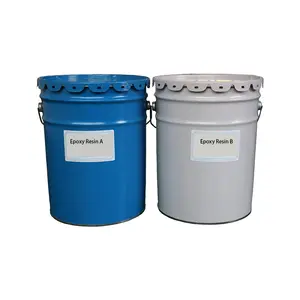

Fast Dry No More Nails Tube Glue Sealant Silicone Strong Nail Free Adhesive Glue 300ml Acrylic Liquid Nails Glue


HY422 Neoprene Glue Sofa Sponge Contact Glue Sealant Clear Neoprene Water Base Spray Glue For Sofa Foam Mattress
























In a world where creativity is celebrated, it's crucial to ensure that the tools we use to express our artistic side are safe and environmentally friendly. This is especially true when it comes to children, who often explore their world through touch and taste. One such tool that often goes unnoticed is glue, a staple in many art and craft projects. However, not all glues are created equal. This article delves into the importance of non-toxic glue, what makes a glue non-toxic, how to choose the right one, and even how to make your own. It's a comprehensive guide to unlocking creativity safely, without compromising on the health of our children or the planet.
Art and creativity play a crucial role in a child's development. However, safety is paramount when children are exploring their artistic side. Children, especially toddlers, have a tendency to put everything in their mouths. This includes art supplies like crayons, markers, and glue. Therefore, it's essential to ensure that the art supplies they use are safe and non-toxic. As parents and caregivers, we need to be mindful of the materials we provide for their creative endeavors, especially with events like Halloween, where creativity is at its peak. It's our responsibility to keep their creativity safe by choosing the most natural and safe products for their activities.
Non-toxic materials, like non-toxic paints, are becoming increasingly important in our daily lives. People are becoming more aware of the environmental impact of the products they use, and non-toxic materials cater to this shift. They are sourced from nature and contain fewer harmful chemicals, making their manufacture and use kinder to the environment. Additionally, non-toxic materials are kinder to people, especially those with allergies and chemical sensitivities. They produce no hazardous waste and have low volatile organic compounds, which are harmful to both people and the environment.
Many of us don’t stop to wonder about the role adhesives play in our lives. However, the common gum leaves behind its own carbon footprint due to the presence of petrochemicals and epoxy, which release greenhouse gases upon drying. Fortunately, plant-based adhesives make it possible for you to mend the little cracks and tears without harming the planet. These adhesives are easy enough to be made at home and require only easily accessible ingredients like water, wheat, corn starch, etc.
Children can use non-toxic glues such as white paste, white glue, and glue sticks. These are safe alternatives to adhesives with a strong solvent smell. Instant-bond glues like Super Glue contain cyanoacrylate, which can be irritating and potentially hazardous. Therefore, it's crucial to choose glues that are certified non-toxic, especially for children's use. Remember, safety should never be compromised in the pursuit of creativity.
When choosing non-toxic glue for children, options such as white paste, white glue, and glue sticks are recommended. It's crucial to avoid adhesives with a strong solvent smell, like rubber cement. Instant-bond glues, such as Super Glue, contain cyanoacrylate, which can be irritating to the eyes and respiratory system. Therefore, it's essential to read the label carefully before using any instant glue. In California, only products with an AP designation, certified to contain no materials toxic or injurious to humans, can be used in grades K-6. This can serve as a guide for parents or teachers everywhere.
Creating your own non-toxic glue is a great way to ensure safety while indulging in art projects. There are several recipes for homemade glue that are safe and effective. For instance, a simple glue can be made using flour, sugar, water, and vinegar. Another option is cornstarch glue, which is ideal for children's craft projects. If you're looking for a vegan alternative, a flour-less glue recipe using milk and vinegar can be a good choice. Making your own glue not only reduces plastic waste but also allows you to control the ingredients used.
When using non-toxic glue, it's crucial to follow safe practices. Despite being less harmful, exposure should still be minimized. Dermal exposure is the most common route, usually occurring when hands come into contact with the adhesive. If volatile components or solvents are used, inhalation exposure may also be a concern. Employers are required to protect workers from exposure to any hazardous chemical over the permissible exposure level. Regular training programs for all personnel involved in handling these materials are essential. These programs should cover the consequences of contact and necessary precautions for safe operation, including storage, handling, and disposal.
A prime example of a non-toxic glue that doesn't compromise on creativity is a popular water-based, acid-free adhesive. This adhesive is safe to use and offers industrial strength, making it ideal for various materials like paper, metal, glass, wood, plastic, and more. The kit also includes a precision applicator for precise application, further enhancing the creative possibilities. Proper storage and usage instructions ensure the product's longevity and effectiveness, making it a reliable choice for artists and craft enthusiasts.
In conclusion, non-toxic glue is an essential tool in fostering creativity in a safe and environmentally friendly manner. It's crucial to understand the role of non-toxic materials in our lives and how they contribute to a healthier and safer environment. By choosing non-toxic glue, we not only protect our children and ourselves from harmful chemicals but also contribute to a more sustainable world. Whether you opt for store-bought non-toxic glue or decide to make your own, remember that safety should never be compromised in the pursuit of creativity. Let's unlock creativity safely, one non-toxic glue stick at a time.